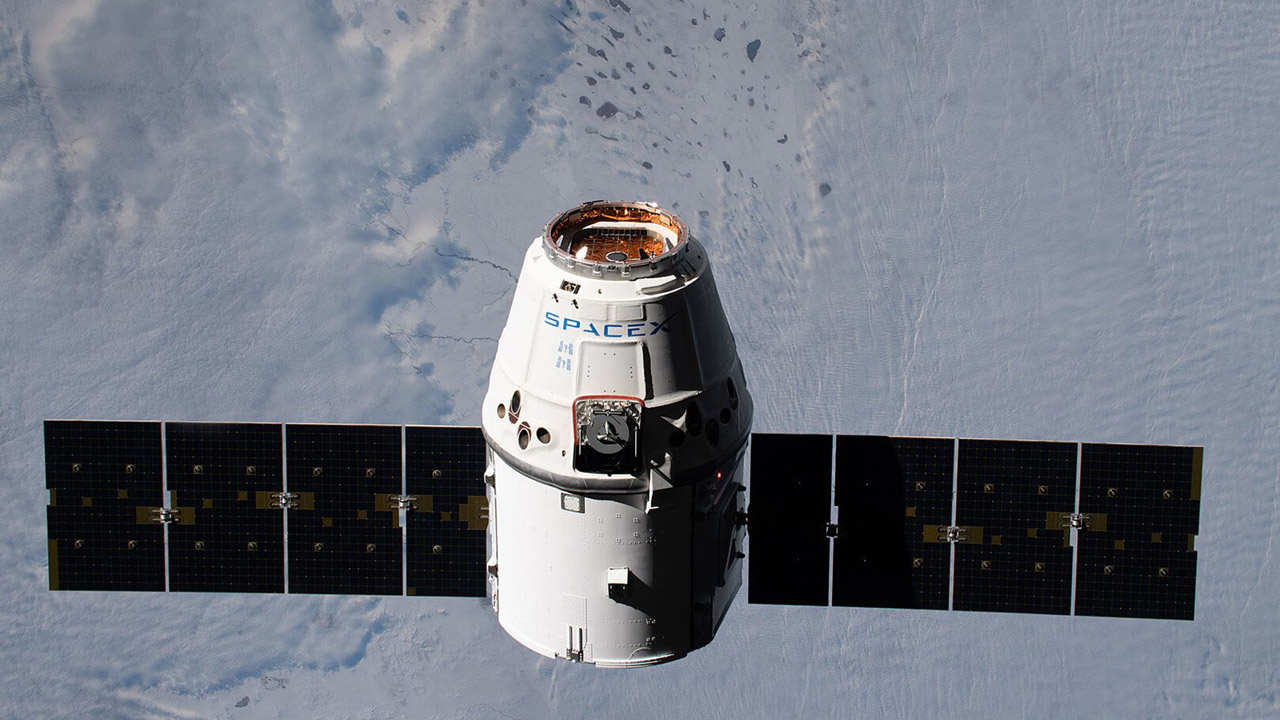KENNEDY SPACE CENTER (FL), January 7, 2020 – Earlier today, the SpaceX Dragon spacecraft successfully splashed down off the coast of California, bringing with it more than 500 pounds of research investigations sponsored by the International Space Station (ISS) U.S. National Laboratory. This successful splashdown and transfer of investigations completes SpaceX’s 19th commercial resupply services (CRS) mission to the space station (contracted by NASA) to send critical research and supplies to the orbiting laboratory.
Among the payloads returning to Earth on this mission is the Mighty Mice in Space investigation led by The Jackson Laboratory. This experiment included a group of mice modified to lack the gene for producing myostatin, a growth factor that normally acts to limit muscle growth in mice and humans—resulting in “mighty mice” with increased muscle mass. Findings from this investigation could shed light on the potential benefits of targeting the myostatin signaling pathway to help prevent diseases on Earth that result in muscle and bone loss.
Multiple investigations returning on this mission were funded through third-party entities. The National Science Foundation funded an experiment from Cornell University examining imbibition, a process in which water is absorbed by solids. This process is easier to measure in microgravity, and knowledge gained could lead to improvements in flood control and new methods to stop bleeding. The National Stem Cell Foundation funded an investigation aimed at evaluating 3D cell cultures on the space station to better understand Parkinson’s disease and multiple sclerosis. Results could have an impact on the discovery and development of biomarkers and therapies to treat these conditions.
Additionally, two investigations funded in part through Boeing are returning on this mission. One is Genes in Space-6, an education investigation awarded through the Genes in Space program. The program, founded by Boeing and miniPCR and supported by the ISS National Lab, holds an annual student research competition in which students in grades 7 through 12 propose pioneering DNA experiments that use the unique environment of the space station. The other is an investigation from biotechnology startup MicroQuin funded through the “Technology in Space Prize,” which is awarded annually by Boeing and the ISS National Lab through the MassChallenge startup accelerator program. MicroQuin’s project seeks to crystalize a membrane protein that plays a key role in tumor development and survival. A better understanding of the protein’s structure could help lead to the development of new cancer therapeutics.
These are just a few of the investigations returning to Earth on SpaceX CRS-19. To learn more about ISS National Lab payloads included on this mission, please visit our official launch page.
Media Contact:
ISS National Laboratory
Patrick O’Neill
904-806-0035
[email protected]
# # #
About the International Space Station (ISS) U.S. National Laboratory:
In 2005, Congress designated the U.S. portion of the ISS as the nation’s newest national laboratory to optimize its use for improving quality of life on Earth, promoting collaboration among diverse users, and advancing science, technology, engineering, and mathematics (STEM) education. This unique laboratory environment is available for use by non-NASA U.S. government agencies, academic institutions, and the private sector. The ISS National Lab manages access to the permanent microgravity research environment, a powerful vantage point in low Earth orbit, and the extreme and varied conditions of space.
# # #





